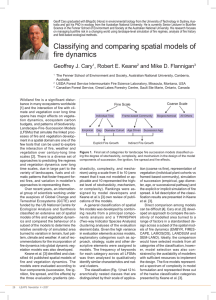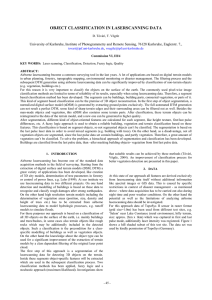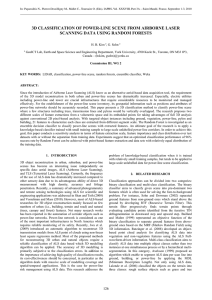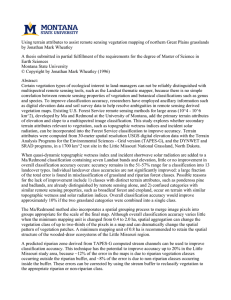ISPRS IGU CIG SIPT
advertisement
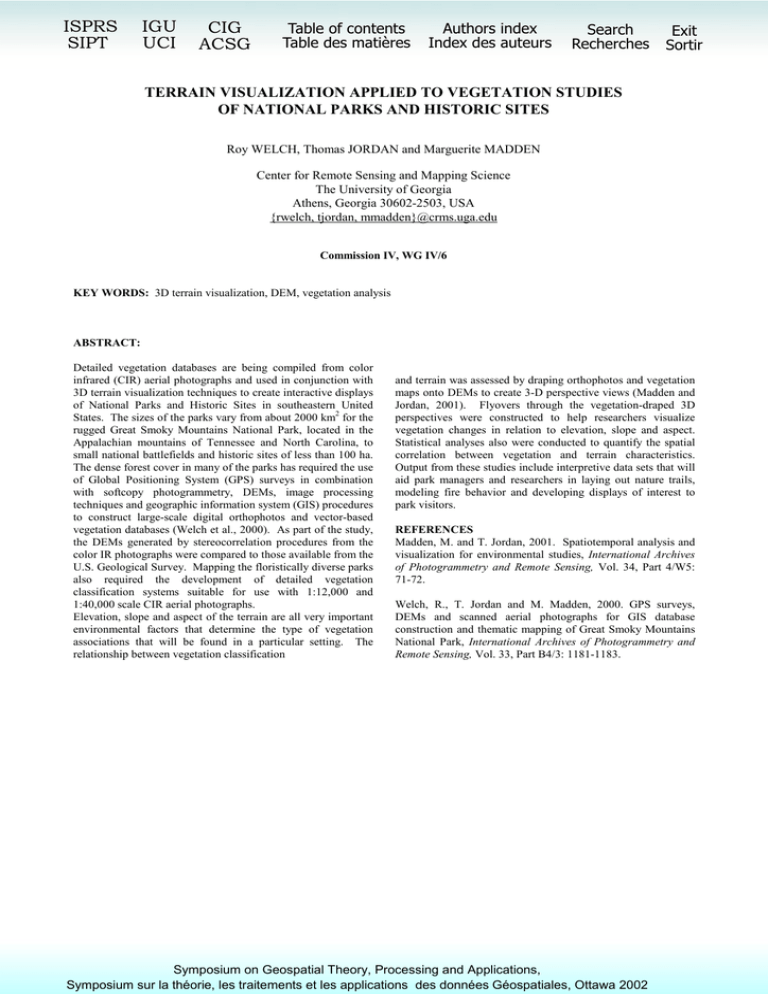
ISPRS
SIPT
IGU
UCI
CIG
ACSG
Table of contents
Table des matières
Authors index
Index des auteurs
Search
Recherches
Exit
Sortir
TERRAIN VISUALIZATION APPLIED TO VEGETATION STUDIES
OF NATIONAL PARKS AND HISTORIC SITES
Roy WELCH, Thomas JORDAN and Marguerite MADDEN
Center for Remote Sensing and Mapping Science
The University of Georgia
Athens, Georgia 30602-2503, USA
{rwelch, tjordan, mmadden}@crms.uga.edu
Commission IV, WG IV/6
KEY WORDS: 3D terrain visualization, DEM, vegetation analysis
ABSTRACT:
Detailed vegetation databases are being compiled from color
infrared (CIR) aerial photographs and used in conjunction with
3D terrain visualization techniques to create interactive displays
of National Parks and Historic Sites in southeastern United
States. The sizes of the parks vary from about 2000 km2 for the
rugged Great Smoky Mountains National Park, located in the
Appalachian mountains of Tennessee and North Carolina, to
small national battlefields and historic sites of less than 100 ha.
The dense forest cover in many of the parks has required the use
of Global Positioning System (GPS) surveys in combination
with softcopy photogrammetry, DEMs, image processing
techniques and geographic information system (GIS) procedures
to construct large-scale digital orthophotos and vector-based
vegetation databases (Welch et al., 2000). As part of the study,
the DEMs generated by stereocorrelation procedures from the
color IR photographs were compared to those available from the
U.S. Geological Survey. Mapping the floristically diverse parks
also required the development of detailed vegetation
classification systems suitable for use with 1:12,000 and
1:40,000 scale CIR aerial photographs.
Elevation, slope and aspect of the terrain are all very important
environmental factors that determine the type of vegetation
associations that will be found in a particular setting. The
relationship between vegetation classification
and terrain was assessed by draping orthophotos and vegetation
maps onto DEMs to create 3-D perspective views (Madden and
Jordan, 2001). Flyovers through the vegetation-draped 3D
perspectives were constructed to help researchers visualize
vegetation changes in relation to elevation, slope and aspect.
Statistical analyses also were conducted to quantify the spatial
correlation between vegetation and terrain characteristics.
Output from these studies include interpretive data sets that will
aid park managers and researchers in laying out nature trails,
modeling fire behavior and developing displays of interest to
park visitors.
REFERENCES
Madden, M. and T. Jordan, 2001. Spatiotemporal analysis and
visualization for environmental studies, International Archives
of Photogrammetry and Remote Sensing, Vol. 34, Part 4/W5:
71-72.
Welch, R., T. Jordan and M. Madden, 2000. GPS surveys,
DEMs and scanned aerial photographs for GIS database
construction and thematic mapping of Great Smoky Mountains
National Park, International Archives of Photogrammetry and
Remote Sensing, Vol. 33, Part B4/3: 1181-1183.
Symposium on Geospatial Theory, Processing and Applications,
Symposium sur la théorie, les traitements et les applications des données Géospatiales, Ottawa 2002









